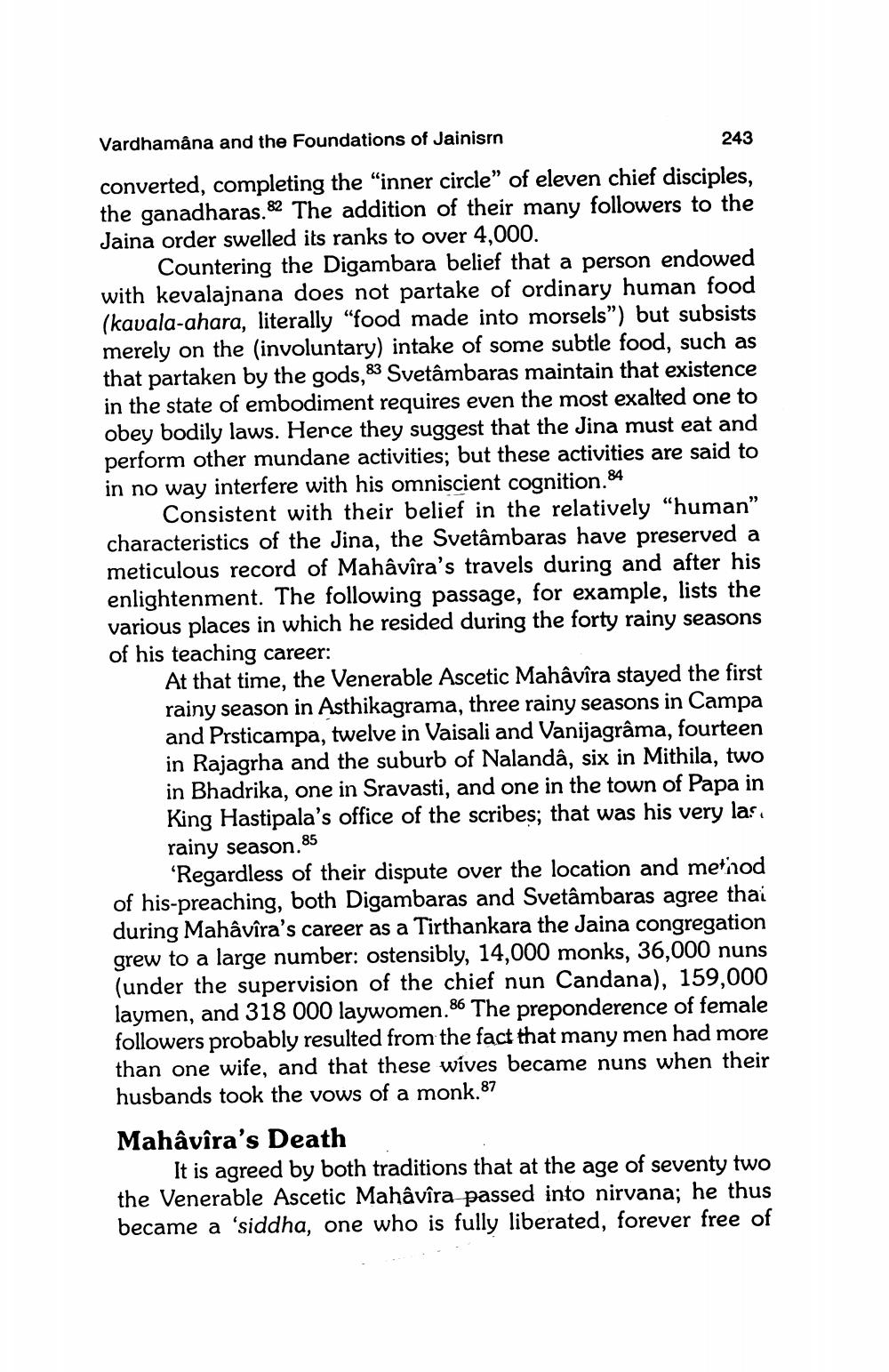________________
Vardhamâna and the Foundations of Jainisrn
243 converted, completing the winner circle” of eleven chief disciples, the ganadharas.82 The addition of their many followers to the Jaina order swelled its ranks to over 4,000.
Countering the Digambara belief that a person endowed with kevalajnana does not partake of ordinary human food (kavala-ahara, literally “food made into morsels") but subsists merely on the (involuntary) intake of some subtle food, such as that partaken by the gods, 83 Svetâmbaras maintain that existence in the state of embodiment requires even the most exalted one to obey bodily laws. Herce they suggest that the Jina must eat and perform other mundane activities; but these activities are said to in no way interfere with his omniscient cognition. 84
Consistent with their belief in the relatively "human” characteristics of the Jina, the Svetâmbaras have preserved a meticulous record of Mahâvîra's travels during and after his enlightenment. The following passage, for example, lists the various places in which he resided during the forty rainy seasons of his teaching career:
At that time, the Venerable Ascetic Mahâvîra stayed the first rainy season in Asthikagrama, three rainy seasons in Campa and Prsticampa, twelve in Vaisali and Vanijagrama, fourteen in Rajagrha and the suburb of Nalandâ, six in Mithila, two in Bhadrika, one in Sravasti, and one in the town of Papa in King Hastipala's office of the scribes; that was his very las, rainy season.85
'Regardless of their dispute over the location and method of his-preaching, both Digambaras and Svetâmbaras agree thai during Mahâvîra's career as a Tirthankara the Jaina congregation grew to a large number: ostensibly, 14,000 monks, 36,000 nuns (under the supervision of the chief nun Candana), 159,000 laymen, and 318 000 laywomen.86 The preponderence of female followers probably resulted from the fact that many men had more than one wife, and that these wives became nuns when their husbands took the vows of a monk. 87
Mahâvîra's Death
It is agreed by both traditions that at the age of seventy two the Venerable Ascetic Mahâvîra passed into nirvana; he thus became a 'siddha, one who is fully liberated, forever free of




